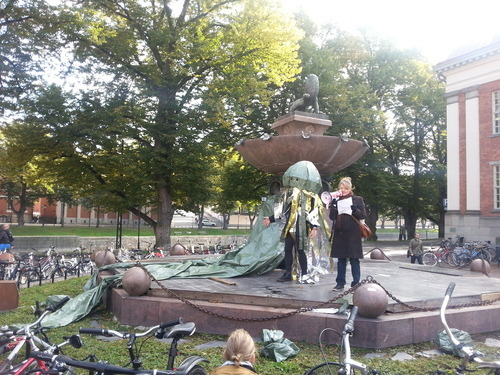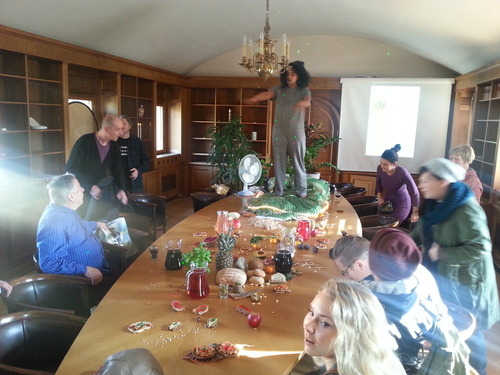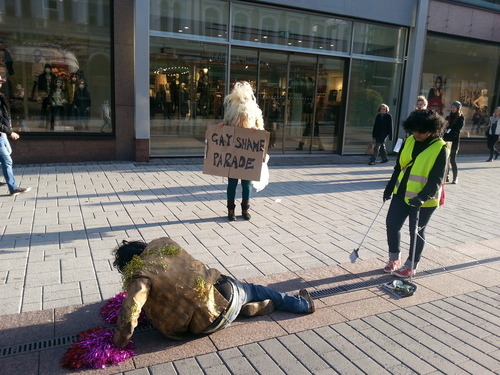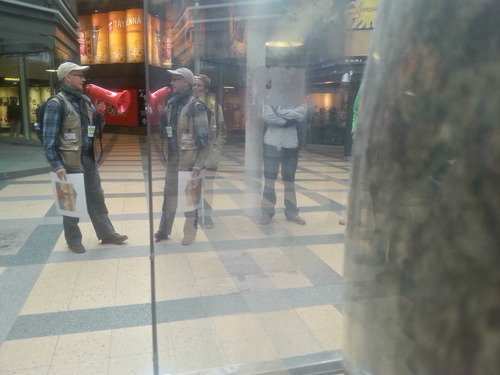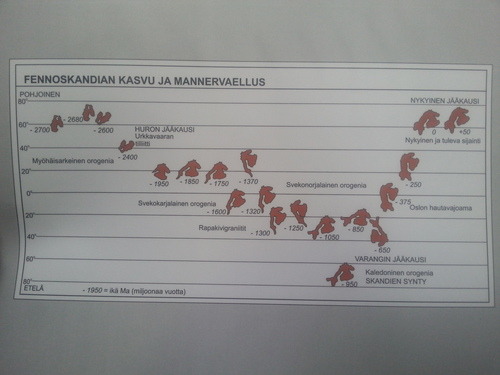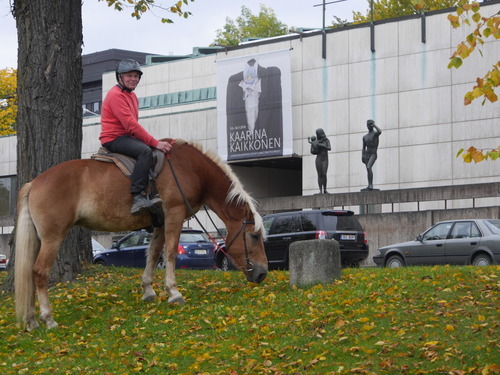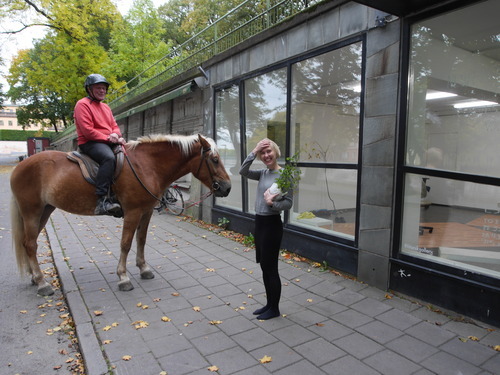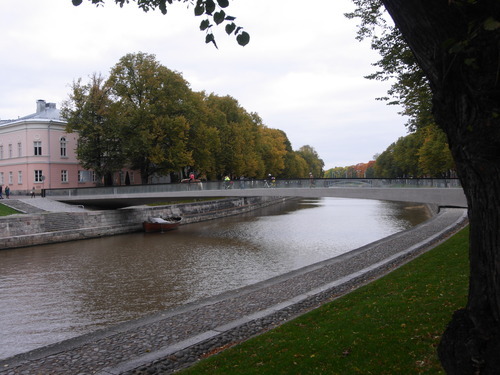Returning from a teaching gig at Villa Arttu youth art school in Hyvinkää. I had the opportunity to spend a weekend with 28, 12-17 year olds, teaching “Performance Architecture” (as defined by Schweder) by using various movement, body awareness and voice based exercises. Participants came from Rovaniemi, Hämeenlinna and Hyvinkää. The group was divided in two batches which alternated each day between my workshop and a sound/media sessions taught by Simi Ruotsalainen.
The “Performance Architecture” workshops started with fake-laugh yoga and an exploration on how voices resonate inside bodies. Voice-making was framed as an internal-organ sculpturing exercise. Participants massaged the insides of their mouths using their tongues and attempted to identify where different tones resonate from. The idea of sound-making as an internal-organ sculpture practice was inspired by әṾӨȻΔ𐐉 -exhibition by Jenna Sutela & Lars TCF Holdhus at Sinne (2015). After the warm up we begun massaging your imaginations in a “What if…” session, in which participants only communicate by asking “What if…”. This exercise is something I picked up from a seminar called “Performative Utopias” organized by Reality Research Center in 2013 (for Baltic Circle).
Then we continued doing echo-izings: Each group member was expected to utter a word or tone, which others repeated. The word or tone had to relate to the space we were in. The exercise continued until everyone had shared their voice. The idea that everyone has to speak out for an exercise to end, was motivated by Peggy Pierrots community talk-shop guidelines from 2017. We practiced deep breathing, standing and walking in a confined space. These exercises were based on basic contact improvisation teaching techniques: The group begun by moving in a rigid grid pattern (90° turns, slow and fast walking). After a while they were allowed to stop their movements when they felt like it. The act of stopping was framed as a personal political strike, which offered an opportunity to reflect the situation. Striking as an action comes from an idea by Jussi Koitela: Activism becomes political, when people stop being “active” and reflect their situation.
After the trust within the group was founded, they begun to use the space more freely and we combined echo-izings to the movement. When people spotted motivating objects, shapes or things in the space, they were advised to stop, to point at the thing and voice their observation. Group members then followed the action: Stopped, pointed at the same thing and repeated what was said about it. This method of reading a space collectively was inspired by Patterns of Life by Julien Prévieux (2015). Participant were then advised to use the same technique for reflecting the joined movements and actions, that were emerging from within the group. Then the group spend a long silent session moving and exploring each others clothes, garments and jewelries. This lead into a very nice session, were people touched each others softly and recognized each others. Each phase of the exercise was discussed collectively before progressing.
Then we performed a repetitive minimalistic stepping dance choreography, which I saw executed as a part of the “Monstera” performance by Essi Kausalainen. I consulted Kausalainen about using her pattern in teaching and got some insight on it. The movement was framed as something intrinsic to living things and when setting it up for the participants I compared the dance to the movement of plants when they are seeking light. People associated the movement with something they do while “idling”, when waiting for a buss etc. We then performed very long sessions following the choreography and discussed what it felt like. People experienced the movement as soothing and enjoyed performing it collectively. We executed it in a large circle and the size of circle alternated during each session. It felt like we were breathing. I recorded the rhythm of our feet and we listened to the recordings, discussing how movement can be documented and how we can hear movement articulated. People seemed to really like listening and spend up to 10 minutes in silence, returning to the rhythmic noise they had produced earlier.
The group was then divided into 3-4 sub-groups, which were tasked to invent their own movement patterns. I presented the authoring of these patterns as a process were we write shapes inside our brains and recall them using muscle memory. We contemplated the ethics of writing inside an other persons brain and tried to visualize how our brains were altered by this experience. Reading was presented as a method of writing into oneself. The sub-groups then developed their own patterns in semi-privacy. After a while we returned to the collective circle, groups taught their pattern to others and performed them for as long as it took for everyone to incorporate them. After this we performed all of the different dances, so that they followed each other with out any forced direction. These sessions were recorded and we listened to them reflecting the experience. Here is a clip from the first session (12 students moving).
The event ended in a soft-lecture, trough which I attempted to explain what “performativity” and “post-structuralism” are. These sessions were more like chats as participants could ask questions and share their ideas during the presentation. The lecture was loosely based on Richard Schechners Performance Studies book from 2013 and the group was tasked to contemplate how repetition inscribes attitudes to our bodies. The workshop was a continuation of the “Post-Structuralism for Kids” sessions I taught in the same school in 2017. There is a short text about it in Finnish: Kehittäkää itsellenne lukihäiriö ja istukaa lattialla [Develop Dyslexia and Sit on the Floor] (2019).


